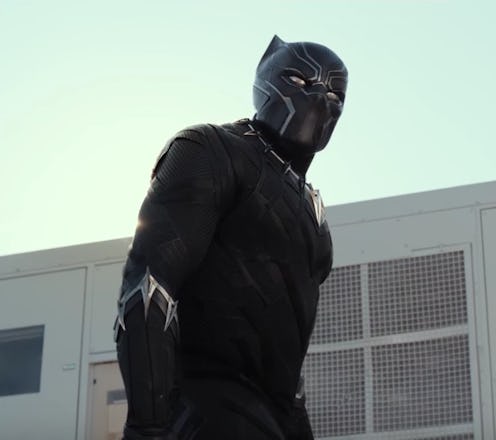
It's not an overstatement to say that Captain America: Civil War is crucial to the future of the Marvel Cinematic Universe (MCU). The movie was promoted as a game-changer, and change the game it certainly did. Not only did Civil War see the public breakup of the Avengers, it also introduced Black Panther and Spider-Man to the MCU, setting up both heroes to star in their upcoming solo movies. Both heroes acted as supporting players in Civil War, but starred in their very own post-credit scenes. That's right, Captain America: Civil War had two post-credits scenes, one focusing on Black Panther, the other on Spider-Man. But the characters featured in the two scenes aren't the only thing that separates the two. The big difference between the Civil War post-credits scenes is that one expands the MCU, the other sets up Spider-Man: Homecoming.
The first post-credits scene finds T'Challa promising Captain America to protect Bucky Barnes/The Winter Soldier and trying to help find a way to rid him of his HYDRA conditioning. It's a scene that, on the surface, might seem just like a set up for Black Panther. And, in some ways, it is. The scene gives audiences their first look at Wakanda, the fictional African country T'Challa now rules, and Wakandan technology, which is, obviously, a huge lead into the Black Panther movie.
So the Black Panther post-credits scene is a nice set up for Black Panther. But more importantly, the scene also establishes Black Panther as a hero with deep connections to the ongoing conflicts in the MCU. Unlike most superheroes, who have a very specific realm of relevance (Daredevil has Hell's Kitchen, Thor has Asgard, etc.), Black Panther is already starting as a man of the world — a hero whose actions have worldwide consequences.
In contrast, the second post-credits scene — Peter Parker siting on his bed playing with his new tech from Tony Stark — is much more of a lighthearted, contained scene. Where the Black Panther scene expands the MCU world, the Spider-Man scene is really just a teaser for Spider-Man: Homecoming . Yes, Iron Man is tangentially involved — he did create the tech, after all — but Tony Stark doesn't appear in the scene, which helps maintain a contained environment for Spidey.
The Spider-Man scene suggests that Spider-Man: Homecoming will take the MCU back to more self-contained stories. Based on the small scale of the scene, it seems fair to assume that Spider-Man won't be traveling the world to fight crime any time soon. In contrast, the Black Panther scene opens up a brand new world, literally. Given the fact that Spider-Man has been teased as a teen-based superhero movie, whereas Marvel's Kevin Feige described Black Panther as "a big geo-political action adventure," the difference in the Civil War post-credits scenes seems deliberate. Yet Spider-Man: Homecoming is set for release July 7, 2017, and February 16, 2018 marks Black Panther, so sadly, it'll still be a long time before fans will get to see either movie actually take place.
Images: Walt Disney Studios; teamstarfox/tumblr; Giphy